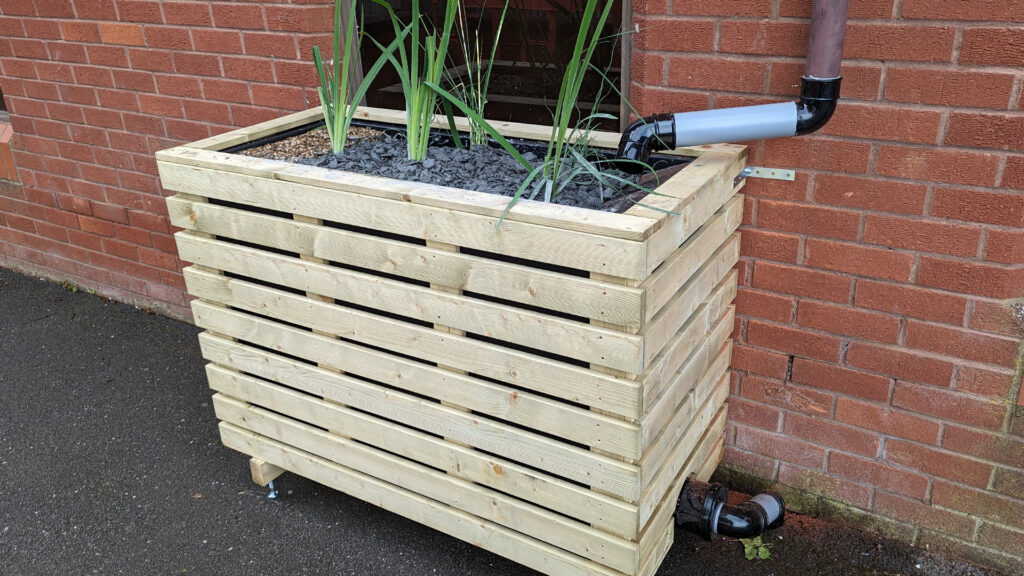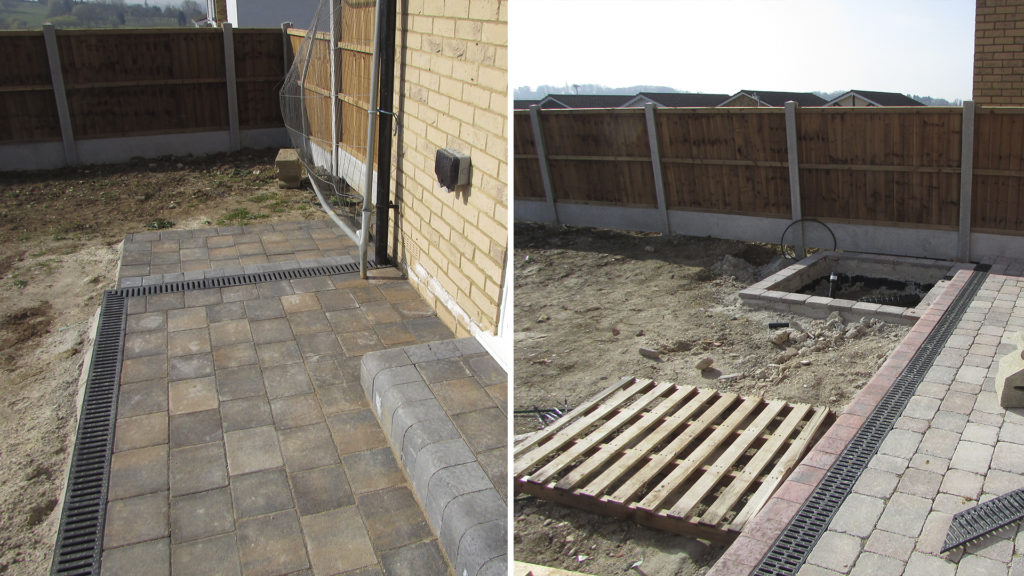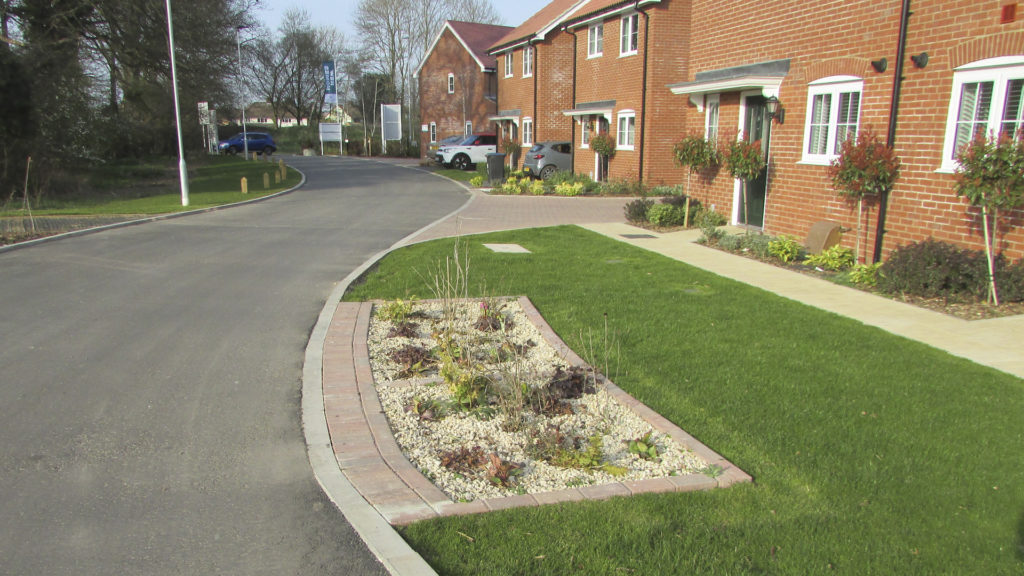One of the greatest worries about the implementation of sustainable drainage features is maintenance. The long term implications of these desirable multi-functional blue-green nature-based solutions seem to frighten planners and developers because the facts and figures for maintenance are not easy to access.
The truth is that most SuDS features are low maintenance; no landscape elements are zero maintenance, so we cannot expect to have a beautiful SuDS feature for nothing. However, the difference between say, a mown grassed area that needs mowing monthly, and a vegetated swale, which needs strimming twice annually, is far less than it may appear.

What is required?
When we look at the range of SuDS features, each has its own maintenance requirements: as mentioned above, a swale needs strimming twice a year, with any shrubs needing pruning when they have reached a certain size. A bio-retention pond or rain garden will need grasses trimming, and any trees or shrubs inspecting. A dry attenuation basin will need the same landscape maintenance as any other soft landscaped area. Any fencing will need to be checked annually to ensure measures adhere too. But this is only the landscape maintenance.
All SuDs features will require drainage maintenance – inlets checked and if necessary, cleared. Outlets and weirs visually inspected. Grates and forebays swept and cleaned. But this level of maintenance is no different to any drainage system, where maintenance is vital if these elements are to work efficiently during a storm event.
Micro SuDS Solutions
The GreenBlue Urban SuDS solutions are carefully designed to require minimal maintenance but give maximum performance. Scientifically proven principles are followed to ensure that stormwater is transferred as simply as possible to minimise the possibilities of blockages, and the soil specification makes sure that the percolation rate stays within acceptable parameters to allow effective drainage and filtration. Whether using the Arborflow – SuDS enabled tree pits – or the HydroPlanter solutions – the plug and play modular rain garden – the systems are designed in such a way that litter and other debris cannot block inlets, and even if maintenance is missed, the effectiveness will not suffer.

Because the GreenBlue Urban solutions are based on bio and phytoremediation principles, where the microbiological and fungal activity in the soil works 24/7 to treat mobile pollutants, the soil never becomes inundated or clogged with these contaminants. This dynamic live medium is extremely effective in breaking down or encapsulating these potential pollutants of our watercourses, and as long as it is kept in good health, kept aerated and uncompacted, will keep working for decades. The GreenBlue Urban ArborFlow system, using the RootSpace soil cell technology, with the ArborVent aeration inlets keeps the soil in optimum conditions, ideal for plant and tree growth. The symbiotic relationship between plant and tree roots with the live elements in the soil is critical, as, without this, the soil merely becomes a filter that can get saturated with pollutants, which then required removal and replacement – and disposal of what is a contaminated waste.

Another maintenance consideration that is important when designing these features is the silts that can build up. These small particles (sized between sand and clay) are washed into the SuDS feature and can build up around the inlets, or in the case of a bio-retention pond, across the base. Periodically these will need clearing, which can be a large project, using excavators. With the GreenBlue Urban solutions, the silt becomes part of the growing medium and usually needs no removal.
Adoption
Another question we are frequently asked is who is responsible for the management and maintenance of the SuDS solutions. Adoption should not be seen as an obstacle, and should instead be seen as an opportunity to ensure that SuDS continue to deliver their benefits. To ensure this happens, adoption should be discussed early between the local authority, developer and water board.

4 Pillars of SuDS
In conclusion, whilst with any SuDs feature, maintenance is important, it should be noted that these nature-based solutions continue to work, even if they have lacked in landscape maintenance. In fact, where grasses are used in swales, or around basins and ponds, and left to grow long, they actually contribute to greater efficiency, as they hold more water than tightly mown grass. Correct design with well thought through specification and with assistance from GreenBlue Urban can result in sustainable drainage systems which cost no more to maintain than any other landscape design, but bring with it multiple benefits, including the four pillars of SuDS: water quantity management, water quality improvement, amenity value for all of us, and great biodiversity opportunities. GreenBlue Urban continue to innovate and develop solutions that enable sustainable places, in harmony with nature!

